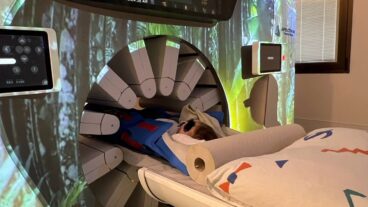New Israeli research that links childhood leukemia to a protein mutation found in adults with a common blood disorder holds out hope of a cure.
Israeli researchers have discovered a vital new link between childhood leukemia and a protein mutation that leads to a blood disorder in adults.
The discovery holds out hope for a possible new treatment for children suffering from blood cancer. A drug now in clinical trials for the adult disorder could also prove effective in treating a similar mutation in children with leukemia.
Every year around 4,500 children in America are diagnosed with leukemia, according to the Leukemia and Lymphoma Society, making it the most common childhood cancer.
For most children who receive this diagnosis, the prognosis is good. Around 80 percent of them will recover and go on to lead healthy lives. For 20%, however, the illness will prove deadly.
One protein mutation links to various disorders
Dr. Shai Izraeli, of Tel Aviv University’s Sackler School of Medicine and Sheba Medical Center first began research into this field when he and his team discovered a mutation of the JAK2 protein in patients with Down syndrome.
Izraeli’s discovery was published recently in the prestigious medical journal The Lancet.
Children with Down syndrome are 20 to 30 times more likely to develop leukemia during childhood than are normal children. Izraeli discovered that children suffering from Down syndrome who developed leukemia had JAK2 mutations.
In an effort to corroborate his finding, Izraeli collaborated with the iBFM Study Group, a European childhood leukemia consortium. He studied 90 cases of Down syndrome leukemia from all over Europe. He discovered that the JAK2 mutation was present in 20% of these cases.
The Israeli team suspected that this protein might also be linked to other disorders and diseases – and further research proved them right. A similar mutation of the JAK2 protein found in Down syndrome and leukemia also causes Polycythemia Vera, a disease common in adults that leads to the overproduction of blood.
Treating two mutations with the same drug
“This is perhaps the first example of two very similar – but different – mutations that apparently do the same thing in a cellular protein,” says Izraeli. “But they’re associated with two completely different disorders, one that causes polycythemia in adults and the other that causes leukemia in children.”
A new drug based on inhibitors of JAK2 has been developed to treat polycythemia and is now in clinical trials. Izraeli believes that this drug could offer “potential hope” to children who suffer from the highest risk of leukemia.
If the clinical trials go well, the researchers believe the drug could be fast-tracked through approvals and made available to child leukemia sufferers within a few years.
“JAK2 inhibitors are not based on chemotherapy. The first experiences with these treatments show very few side effects,” says Izraeli.
“All that researchers need to do is to expand these clinical trials to children and adults with high-risk leukemia – and that can happen relatively quickly,” he remarks. “We will know in just a few years what these drugs are capable of.”
Holding out hope and life
Izraeli explains that typical chemotherapies for leukemia also have a high “toxicity cost.”
Children with leukemia are treated with 10 to 12 different chemotherapies over a period of two to three years. As a result, some children suffer long-term and irreversible damage, such as neurological, heart, or bone problems and sterility.
Researchers looking for viable alternatives may turn to Izraeli’s research as a promising avenue for success.
“Our research gives hope and life to the 20% who might not make it, as well as those who may experience a relapse,” says Izraeli.












